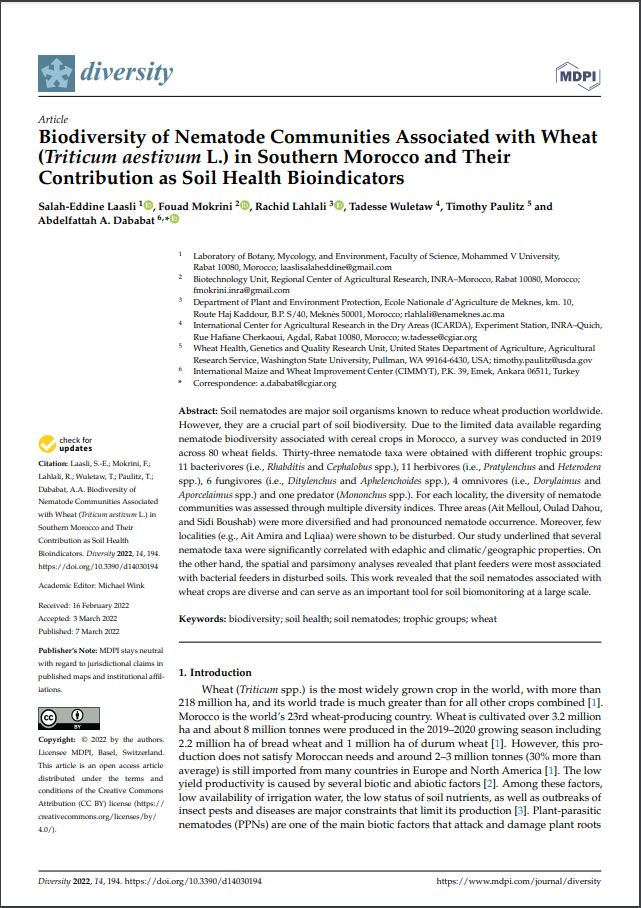Biodiversity of nematode communities associated with wheat (Triticum aestivum L.) in Southern Morocco and their contribution as soil health bioindicators
Soil nematodes are major soil organisms known to reduce wheat production worldwide. However, they are a crucial part of soil biodiversity. Due to the limited data available regarding nematode biodiversity associated with cereal crops in Morocco, a survey was conducted in 2019 across 80 wheat fields. Thirty-three nematode taxa were obtained with different trophic groups: 11 bacterivores (i.e., Rhabditis and Cephalobus spp.), 11 herbivores (i.e., Pratylenchus and Heterodera spp.), 6 fungivores (i.e., Ditylenchus and Aphelenchoides spp.), 4 omnivores (i.e., Dorylaimus and Aporcelaimus spp.) and one predator (Mononchus spp.). For each locality, the diversity of nematode communities was assessed through multiple diversity indices. Three areas (Ait Melloul, Oulad Dahou, and Sidi Boushab) were more diversified and had pronounced nematode occurrence. Moreover, few localities (e.g., Ait Amira and Lqliaa) were shown to be disturbed. Our study underlined that several nematode taxa were significantly correlated with edaphic and climatic/geographic properties. On the other hand, the spatial and parsimony analyses revealed that plant feeders were most associated with bacterial feeders in disturbed soils. This work revealed that the soil nematodes associated with wheat crops are diverse and can serve as an important tool for soil biomonitoring at a large scale.

